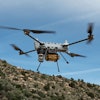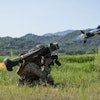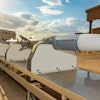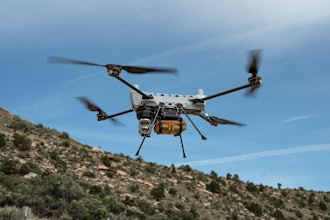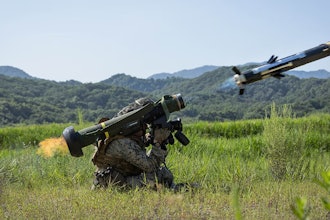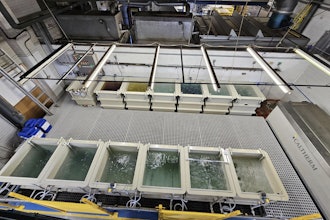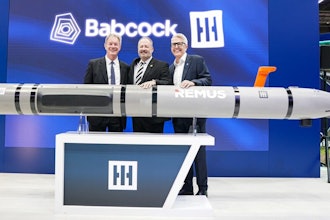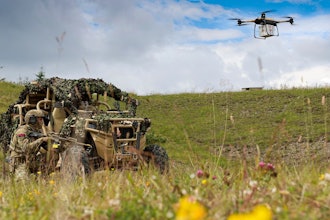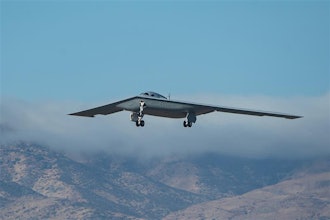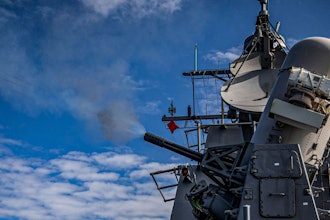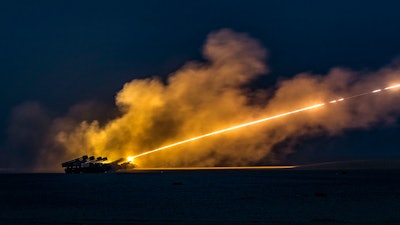
While the U.S. remains the world’s most powerful military force, our nearest competitors are beginning to close the gap. Thanks to globalization of the economy, industrial growth among developing nations and a bit of espionage, maintaining overmatch — the military’s term for a competitive edge — is increasingly difficult.
For the most part, it’s not for lack of R&D. American universities, entrepreneurs and major government contractors are some of the most innovative and technologically advanced in the world. The creativity and ingenuity behind the U.S. military machine are unparalleled, and funding is substantial: the U.S. military budget is over $600 billion, surpassing Russian spending by over $400 billion.
Instead, the biggest obstacle to U.S. tactical superiority is efficiency. The process involved in delivering new technologies into the hands of American soldiers can be extremely complex, slow and cumbersome. From development to deployment could take years, as achieving manufacturing capacity at scale takes time. Meanwhile, our adversaries are forging ahead with greater agility and efficiency.
To overcome this hurdle, the military and its contractors are making a major push to modernize, adopting Industry 4.0 and Factory of the Future practices in order to digitize the development, engineering, manufacturing and delivery process. The U.S. Army Futures Command is leading the charge, prioritizing robotics, Industrial Internet of Things, digital design and digital thread technologies to accelerate the delivery of next-generation capabilities to the American warfighter.
According to the Army’s Office of the Chief of Public Affairs, a transformative modernization approach is necessary if the U.S. Army is to maintain its superiority. “The Army must fundamentally change its approach to modernization to consider multiple possible futures and leverage commercial innovations, cutting-edge science and technology, and feedback from the warfighter,” the organization has said. “The battlefield of tomorrow will be more lethal, and the Army must change with that in mind. To ensure overmatch, the Army must modernize, train and structure the force to build land-power capability against near-peer threats.”
To achieve this transformation, the Army is focusing on eight critical areas:
- long range precision fires,
- next-generation ground combat vehicles,
- air and missile defense,
- soldier lethality,
- synthetic training environments,
- network command, control, communication and intelligence,
- assured positioning, navigation and timing, and
- future vertical lift.
While plenty of innovation is already ongoing in each of these areas, getting the resulting technologies into the hands of soldiers is where the process often bogs down. And, that’s where Industry 4.0 comes in. By thinking and operating more like an agile tech startup, the Army is adapting to the more dynamic threat landscape to keep America safe and achieve overmatch on the battlefield.
Working through programs like the FirePoint Innovations Center, a partnership between the Army’s Combat Capabilities Development Command Aviation and Missile Center (CCDC AvMC) and Wichita State University, the Army is accelerating technology deployment through several key initiatives:
- Using design thinking with an interdisciplinary approach to accelerate innovation. By optimizing design of new technologies for a modern warrior, this approach serves to actually meet the dynamic needs of the modern warfighter.
- Fostering collaboration between the Army, commercial industries, universities, entrepreneurs and government partners. By inviting the brightest minds with the best technology to the table, the Army is bringing the full capacity of U.S. ingenuity together, to solve technology challenges.
- Leveraging agile design sprints, prototyping and commercialization processes used to move fast in the commercial sector. By adopting a more entrepreneurial approach for everything from R&D to procurement and testing, the Army aims to innovate and deliver solutions faster.
To achieve this, the Army recognizes that designing leading-edge technologies is only half the battle. Manufacturability must also come in to play. The fact is, no matter how great the technology, if it won’t scale, costs too much to manufacture or current processes won’t accommodate it, it’s of no use. Efficiency is the name of the game.
To that end, FirePoint is working with other university and industry partners and the Army to implement digital thread, IIoT, and robotic assembly as part of the overall technology evaluation process. Before new designs can be approved for development, they must meet manufacturability criteria that ensures speedy and efficient delivery—the same as any commercial company would do in evaluating their processes for time-to-market.
Ensuring the use of an Industry 4.0 approach not only speeds delivery of critical battlefield technologies, but it also helps to advance overall manufacturing superiority and scalability in the event of a wartime ramp-up. While the teams working on next-generation Army tech are far too young to remember the massive uptick in American manufacturing to support the war effort in the 1940s, the Army’s institutional memory is clear. Army leadership recognizes the critical of importance of being able to accelerate manufacturing quickly, and new technologies must meet this criterion.
While commercial tech companies and manufacturers know all too well the incredible pressure to not only turn out more advanced solutions but also do it faster and cheaper than international competition, the U.S. military faces these same challenges, alongside the hefty burden of protecting America from those who would do us harm.
By leveraging the concepts of modern manufacturing to achieve overmatch, the U.S. Army and other branches of service are once again widening the gap and reasserting American military superiority.
Steve Cyrus is the manager of technology collaborations at FirePoint.

